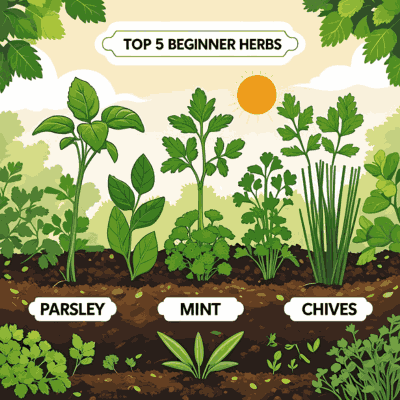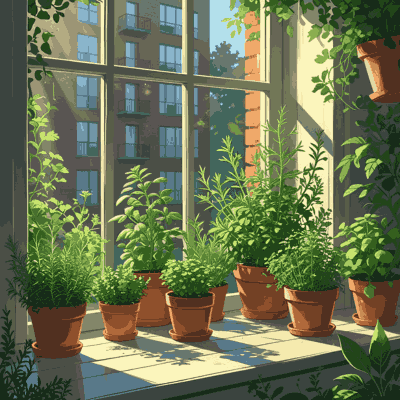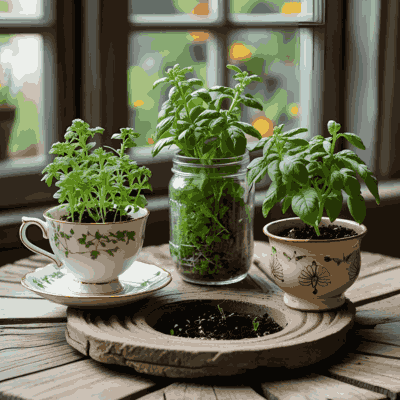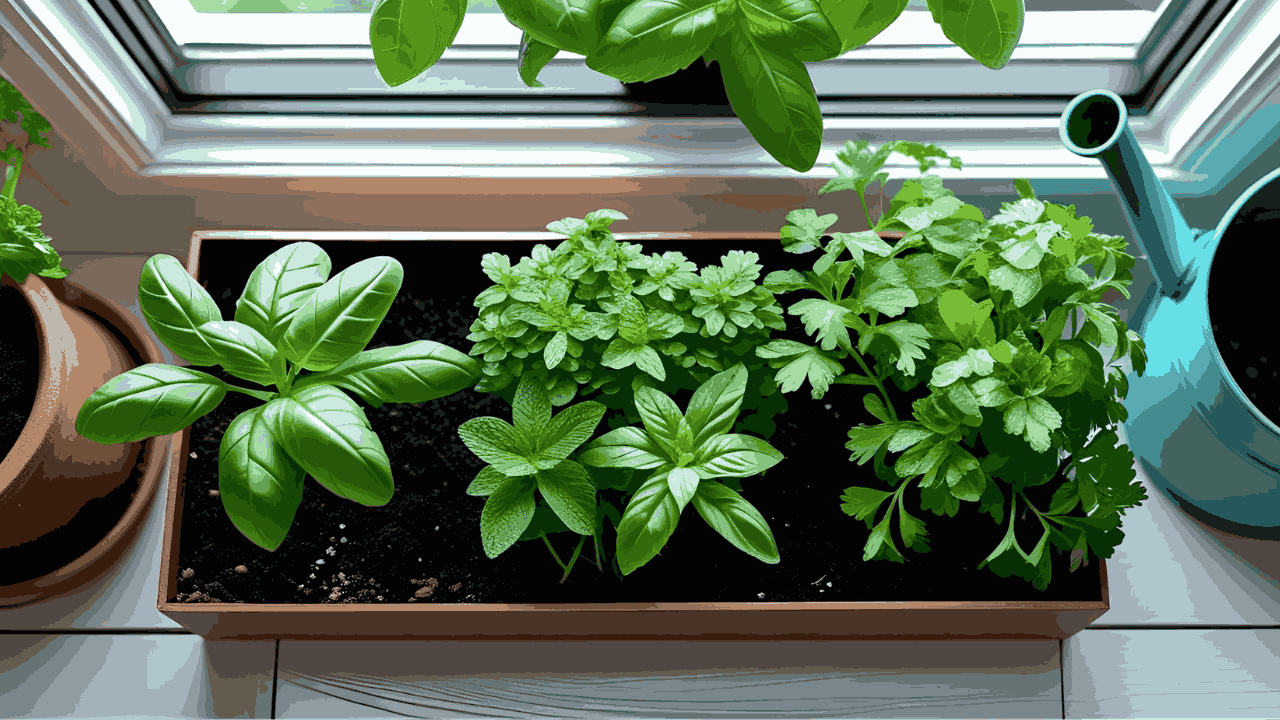Micro-herb gardens are one of the easiest ways to grow herbs indoors, even in apartments without balconies or yards.
Living in an apartment or a home without a yard doesn’t mean you have to give up on gardening. In fact, with a little planning and creativity, you can grow your own flavorful herbs right in your kitchen or living room. Micro-herb gardens indoors are the perfect solution for people with limited space who still crave fresh, homegrown ingredients.
This comprehensive guide walks you through everything you need to know about starting and maintaining your own indoor micro-herb garden—from choosing the right herbs to setting up lighting, watering, and harvesting. Plus, it’s optimized for AdSense so it fits perfectly into monetized blog formats.
Why Choose a Micro-Herb Garden Indoors?
Micro-herb gardens are compact, manageable, and highly rewarding. They allow you to grow fresh herbs year-round, reduce food waste, and enhance the flavors in your cooking. Best of all, they don’t require much space or effort—just a bit of sunlight (or artificial light) and care.
1. Best Herbs to Grow When You Want to Grow Herbs Indoors

Start with herbs that grow well in containers and require minimal maintenance. Popular choices include:
- Basil – A kitchen favorite that thrives with plenty of sunlight.
- Mint – Very hardy and fast-growing, but best grown alone due to its spreading roots.
- Parsley – Ideal for low-light conditions, great for beginners.
- Chives – Compact and quick to regrow after cutting.
- Thyme – Loves sun and can go for days without watering.
- Cilantro – Easy to grow and great for garnishing.
2. Containers and Drainage
Good drainage is crucial for healthy root development. Choose pots with drainage holes or add a layer of pebbles at the bottom of containers like teacups, mason jars, or even recycled cans. Use saucers to catch excess water and avoid damaging surfaces indoors.
When you grow herbs indoors, soil quality matters more than outdoor gardens because of limited drainage and airflow.
3. How to Grow Herbs Indoors Without Natural Light
A lightweight, well-draining potting mix is ideal. Avoid using garden soil indoors as it can contain pests or mold spores. Instead, go for an organic potting mix designed specifically for herbs or indoor plants. You can also mix in perlite or coco peat for added aeration.
4. Light Requirements

Most herbs need 4–6 hours of sunlight daily. Place your herb garden near a south-facing window for the best natural light. If that’s not possible, invest in LED grow lights that mimic the spectrum of sunlight. Full-spectrum bulbs ensure that your herbs photosynthesize properly, even during dark winters or in low-light apartments.
5. Watering Techniques

Overwatering is a common mistake in indoor herb gardening. To avoid it:
- Water only when the top inch of soil feels dry.
- Use pots with drainage to avoid soggy roots.
- Mist plants if indoor air is too dry.
Consistency is key—try to water at the same time of day, and avoid letting your herbs dry out completely.
6. Humidity Control
Indoor environments, especially with AC or heating, can be very dry. Raise humidity by:
- Placing a water tray near the plants.
- Grouping plants together to create a microclimate.
- Using a humidifier or occasional misting.
7. Fertilizing Wisely
Herbs grown indoors need nutrients, but not as much as outdoor plants. Use a diluted organic liquid fertilizer once every 4–6 weeks. Too much fertilizer can cause rapid but weak growth and affect flavor.
8. Watering and Care Tips to Grow Herbs Indoors Successfully

Prune your herbs regularly to encourage bushier growth and to prevent flowering (which often reduces flavor). Always use clean, sharp scissors or shears, and never remove more than one-third of the plant at a time. Regular harvesting also keeps plants from getting leggy or overgrown.
9. Preventing Pests Indoors Grow Herbs Indoors
Even indoor plants can attract pests like aphids, spider mites, or whiteflies. To manage them:
- Inspect plants weekly, especially the undersides of leaves.
- Use neem oil or insecticidal soap for treatment.
- Keep the area clean and remove dead leaves.
10. Placement and Design Ideas

Make your indoor herb garden both functional and beautiful:
- Use vertical planters or hanging baskets to save counter space.
- Try a tiered shelf by a sunny window.
- Place pots on a kitchen rack, windowsill, or magnetic wall-mounted holders for modern appeal.
11. Common Mistakes to Avoid
Here are a few things to steer clear of when maintaining your micro-herb gardens indoors:
- Overcrowding plants in a single container
- Skipping pruning or harvesting
- Ignoring signs of pests or root rot
- Placing herbs in poorly lit areas without grow lights
Conclusion
Growing micro-herb gardens indoors is an enriching hobby that offers fresh, homegrown herbs at your fingertips. With proper light, watering, and care, you’ll soon enjoy a thriving mini garden no matter how small your living space. Whether you’re cooking with basil or adding mint to your tea, nothing beats the flavor of herbs you’ve grown yourself.
Start small, experiment with your space, and don’t be afraid to get creative. Your indoor herb garden isn’t just a source of food—it’s a source of joy, peace, and greenery right inside your home.
No matter your apartment size, anyone can grow herbs indoors successfully with the right light, soil, and care.
Frequently Asked Questions (FAQs)
Q1. Can I grow micro-herbs in low light?
Yes, but you’ll need LED grow lights that simulate sunlight. They’re affordable and easy to set up.
Q2. How much space do I need?
Even a single shelf, countertop, or windowsill can be enough. Use vertical planters to maximize small areas.
Q3. How long do indoor herbs take to grow?
Most herbs are ready to harvest within 3–6 weeks, depending on the variety and conditions.
Q4. Are micro-herb gardens expensive?
No. You can start with recycled containers, seeds, and minimal investment. LED lights and organic fertilizer are optional but helpful upgrades.
Q5. Can kids or beginners manage an indoor herb garden?
Absolutely! It’s beginner-friendly and educational for all ages. Great for families, seniors, and anyone new to gardening.
Ready to get started? Your indoor herb adventure awaits!
Title: 10 Must-Know Tips for Thriving Micro-Herb Gardens Indoors – Vyriti
